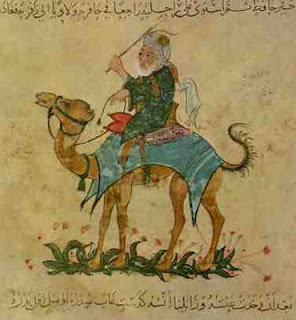Sunday, June 20, 2010
Journey To Mecca
This is a 45 minutes documentary about the famous Moroccan traveler Ibn Battuta.
He started a voyage from his home town Tanga or Tangier in the year 1325 to Mecca, which was a historic and cultural center of Islam.
He returned home after 29 years, after he crossed most of the world; from Africa to India, China and the Maldives covering about 100,000 miles, which is 3 or 4 times what the famous Marco Polo had covered.
Later he dictated his reminiscences to become the most famous travel books (Al Rihla) The Journey.
The movie was filmed in both Saudi Arabia and Morocco.
It is an Imax feature, in three languages; Arabic, English and Berber Tamazight.
The Journey takes you to amazing places from Mt. Everest to the Deep Sea and Outer Space.
It ended in showing the Now a Days Hajj or pilgrimage where over 3 million Muslims perform the holy rituals.
However, for the Non Muslims, the IMAX feature give them the chance to see as close as possible this outstanding event.
Muslims will definitely see a deeper significance.
Journey to Mecca was made with special Imax cameras and cost more than $13 million.
"Erasing that kind of prejudice is the reason Taran Davies — a half-English, half-American graduate of Eton and Harvard who was raised in the Church of England — has devoted himself to making films about Islam." New York Times
His latest and most ambitious project, “Journey to Mecca,” strives to impress Westerners with a side of Islam that he thinks gets short shrift in the news coverage of Islamic fundamentalism, focusing on the respect with which millions of Muslim pilgrims treat one another and how the hajj unites Muslims, Jews and Christians.
But Mr. Davies and his director, Bruce Neibaur, have done it for the first time in Imax, a format in which the vastness of deserts and seas show up superbly on vastness of screen and in which aerial shots capture every face in a crowd.
It’s also a format that uses 85-pound cameras that must be reloaded every three minutes.
The film concentrates only on Ibn Battuta first hajj and recreates its high points — wild dashes pursued by highwaymen through the Atlas Mountains; a felucca ride up the languid Nile; ancient Damascus by night; the Grand Mosque of Mecca as it was in 1326.
The film includes a stunning flyover shot taken just above the camels’ heads. How to keep the beasts from bolting?
Before completing his epic journey, Ibn Battuta will be chased down by black-cloaked highwaymen. He will endure blinding sandstorms, cross vertiginous mountains, be tempted by mirages in broiling deserts. And, at night, he will sit mesmerized on cooling sand dunes, his young heart soaring, staring at a sky splashed with stars.
Journey to Mecca is an exploration of the history, geography, and culture of 14th century North Africa and the Middle East.
The film is based on the real-life experiences of Ibn Battuta, one of the greatest travelers of all time.
The story of his first Hajj, or pilgrimage to Mecca, offers the modern eye a glimpse into a vital part of history.
Journey to Mecca emphasizes much on the common traditional cultures between the three main religions; Islam, Judaism and Christianity.
The Movie also shows how the Good Values overcome evil temptations, and how the human nature takes back its trend towards Good.
One of the Movie producers said that the aim is to give a better picture on Islam to the West, and better highlights on Islamic Civilization. Dominique Reed also said that they wanted to show the cultural, spiritual and historic elements that the Islamic world used to possess in a non-religious way.
Taran Davis explained that he wanted to publish a Peace Culture, because the Hajj or Pilgrimage is about realizing this culture of peace.
However his message is confusing especially when he relates the building of Kaaba to Ibrahim and Ismail.... suggesting that the three religions participates in this great heritage.
All in all, it is always good to publicize the culture of peace between religions.
Even if this culture is penetrated by politics and then by blood.
Take a look on what caused wars in the past and also now...
Conflicts between religions... come on top of the list
Then Money
Sami Cherkaoui
Subscribe to:
Post Comments (Atom)






No comments:
Post a Comment